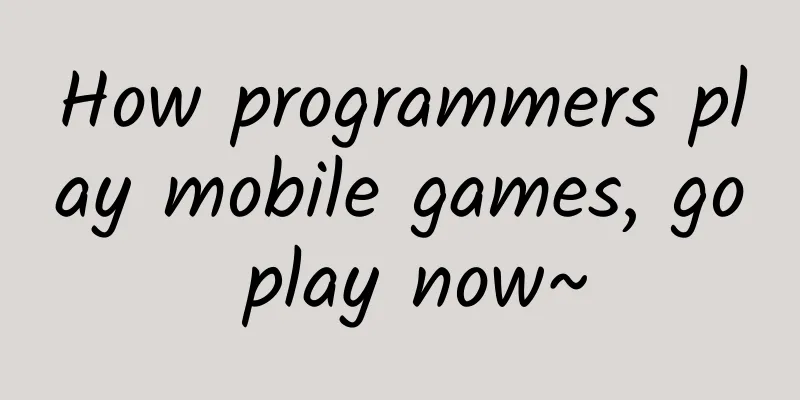Oh my god! I just found out that I can control objects remotely.

|
Imagine if you could make distant objects respond to your will by sending a signal, just like the protagonist in a science fiction movie. What a desirable scene! Perhaps you have also dreamed of becoming the protagonist in a fantasy novel, where you only need to think and the magic weapon can automatically respond and control everything. Although these magical abilities are difficult to realize in reality, their "simple versions" can be seen everywhere - when watching the Spring Festival Gala, if you want to change the channel and adjust the volume, just take out the remote control and press it. When playing with remote control cars with children, you can operate the handle or mobile phone to make the car move as you wish. Even doctors thousands of miles away can perform surgery on you by remotely controlling surgical instruments. These technologies that have become commonplace are all wireless remote controls . The core of wireless remote control technology is to send a signal to stimulate the internal mechanism of an object, so that it can respond autonomously and perform predetermined actions. This technology not only allows us to feel the magic of science and technology in our daily lives, but also allows us to realize the dream of "everything goes with the thought" to some extent. So, what exactly is wireless remote control technology? How does it work? Let's talk about it today. The origin of wireless remote control The origin of wireless remote control technology can be traced back to the end of the 19th century. In 1893, the electrical wizard Nikola Tesla publicly demonstrated radio communication for the first time in St. Louis, Missouri, USA. In 1898, Tesla conducted an experiment of remote-controlled automated boats in the lake of Central Park in New York, which was a great success. Tesla's remote-controlled boat can control the rotation direction of the motor according to the radio waves sent by the remote control device, thereby adjusting the angle of the rudder. Tesla's invention was called magic by the audience at the time because it could control the boat without any visible connection. Tesla's remote control boat picture from wiki Tesla's remote-controlled boat was a revolutionary technology at the time, which not only demonstrated the potential of electromagnetic pulses in wireless control devices, but also provided inspiration for the development of wireless communication technology, which was later widely used in various industries such as military, entertainment, and consumer electronics. The advent of remote control In the civilian field, various wireless remote control technologies are constantly developing and applying. In 1956, Robert Adler developed an ultrasonic remote control, which uses ultrasound to adjust TV channels and volume. In 1980, infrared remote controls began to gradually replace ultrasonic remote controls. In 2007, Sony released an RF (radio frequency) remote control, which further improved the convenience of remote controls. Infrared remote control uses near infrared light with a wavelength of 0.76 to 1.5 μm to transmit control signals. It is usually emitted by an infrared light emitting diode, and the signal is received and decoded by an infrared receiving diode. Since infrared light has the advantages of good directionality and strong anti-interference ability, it is widely used in the remote control of household appliances such as televisions and air conditioners. RF radio frequency remote control uses radio waves to transmit signals, and the commonly used frequencies are 315MHz and 433MHz. It modulates the control signal onto the radio frequency signal and transmits it, and then the receiver receives the signal and demodulates and decodes it. Radio waves can propagate through some obstacles and have stronger penetration ability and longer transmission distance. However, with the development of the times, people are no longer satisfied with using various remote controllers to control other objects, and have higher and higher requirements for lightweight and convenience. Compared with other wireless remote control technologies, Bluetooth and Wi-Fi technologies have higher integration, higher transmission speed and more stable connection performance. They realize wireless connection and control between devices through Bluetooth modules or Wi-Fi modules. Therefore, they are widely used in the remote control of smart devices such as smartphones and tablets. Wireless remote control technology plays an indispensable role in every corner of our daily life. From TV remote controls to smart home systems, these small devices allow us to easily control various electrical appliances in our homes and enjoy the convenience brought by technology. How to achieve wireless remote control? So, how does wireless remote control technology work? Let's embark on this wonderful journey from sending instructions to precise execution. 1 Step 1: Instruction generation and encoding Imagine holding a remote control tightly in your hand and gently pressing a button. At this moment, the processor inside the remote control starts to work. It receives your command and converts it into a unique string of digital signals. These signals are like carefully written "secret codes", and each string represents a specific operation, such as changing the channel, adjusting the volume, or turning on the lights. 2 Step 2: Signal transmission and diffusion Next, these "secret" signals need to travel through the air to reach the device being controlled. To achieve this goal, the remote control uses wireless communication technologies such as infrared or radio waves. Infrared signals are like the light from a flashlight. They travel in a straight line and need to be aimed directly at the target device. Radio waves are more flexible. They can pass through some obstacles and spread over a wider area. Either way, these signals are like invisible messengers, accurately delivering your instructions to the target device. 3 Step 3: Signal reception and decoding When the signal reaches the target device, the receiver inside the device will immediately start working. It is like a keen listener, always ready to capture the "secret words" from the remote control. Once the signal is received, the receiver will convert it back to the original command information and send it to the device to perform corresponding operations based on these commands, such as switching channels, adjusting volume or turning on lights. 4 Step 4: Execution and Feedback In most cases, wireless remote control technology is a one-way process. That is, the remote control sends a command and the target device immediately performs the corresponding action without any feedback to the remote control. However, in some advanced systems, such as smart home systems, the device may send status updates or confirmation information to the remote control or central controller. This information can help you understand the current status of the device or confirm whether the command was successfully executed. With the development of the Internet of Things (IoT), artificial intelligence (AI) and 5G communication technology, remote control technology has also ushered in new changes. Now, we can remotely control various devices such as lights and home appliances at home through mobile phone applications. We can even use advanced remote control technology to realize automatic driving of cars and command drones to perform flight performances, making our lives more convenient and interesting. Wireless remote control scene of smart home. Image generated by AI Remote control, a new direction So, let's go back to the beginning. Have you ever thought that one day in the future we can really achieve "mind control"? The answer is possible. Brain-computer interface technology (BCI) is known as the "information highway" for the human brain to communicate with the outside world. It reads brain waves and converts our intentions into instructions to transmit to computers or other devices. In recent years, BCI technology has made many breakthroughs. In 2020, the neuroengineering team of Tianjin University realized the use of brain-computer interface to control drones. In the experiment, the experimenter only needs to concentrate to make the drone complete instructions such as take-off, landing, and rotation. This brain-controlled drone system does not rely on hands or voice input, but relies entirely on brain signals for control. This not only demonstrates the application potential of brain-computer interface technology in the field of remote control, but also provides a more convenient lifestyle for special groups, such as helping people with limited limbs to operate wheelchairs, home appliances or smart homes. On July 5, 2020, the neuroengineering team of Tianjin University conducted a brain-controlled drone experiment. Image from Xinhua News Agency (Photo by Song Rui) With the advancement of big data and machine learning algorithms, the accuracy of BCI in identifying brain commands continues to improve, and the popularity of 5G and low-latency networks makes remote control more convenient. In the future, brain-computer interfaces are expected to be combined with wireless remote control technology, allowing us to control cars, drones, and even space station operations through "thoughts". China's "Tiangong-2" experiment has taken the first step. Astronauts successfully interacted with the device through a brain-computer interface, opening up a new way for space remote control. BCI can break through the limitations of traditional wireless remote control and combine the convenience of remote control with the real-time nature of thoughts. In the future, wireless remote control may no longer rely on remote controls, mobile phones and other devices, but directly connect to our thoughts in a smarter and seamless way. This technology will not only be a tool, but will become an extension of our thoughts, making the magic of "mind control" truly a reality. Wireless remote control technology is like a key to open the magical world of "controlling objects remotely". It allows us to easily control various devices and enjoy the convenience and fun brought by technology. With the continuous development of technology, I believe there will be more magical applications waiting for us to discover and explore in the future! Here, please use your brains. If "mind control" could be achieved, what would you most like to use it for? References [1] Sun Zhenping. Unmanned Combat System[M]. Published by: National University of Defense Technology Press, 2023. [2] Pfurtscheller, G., & Neuper, C. (2001). Motor imagery and direct brain-computer communication[J]. Proceedings of the IEEE, 89(7), 1123-1134. [3] Xinhua News Agency. “Mind control” is really coming…[EB/OL]. (2021-02-05) https://xhpfmapi.zhongguowangshi.com/vh512/share/9748145?channel=weixin [4] China Radio Administration. Principles of wireless remote control [EB/OL]. https://www.srrc.org.cn/article13464.aspx Planning and production Author: Lin Hao, a postgraduate student at the Changchun Institute of Optics, Fine Mechanics and Physics, Chinese Academy of Sciences Review丨Liang Zhongwei, Vice Dean of the School of Mechanical and Electrical Engineering, Guangzhou University Planning丨Ding Zong Editor: Ding Zong Proofread by Xu Lai and Lin Lin |
Recommend
From amazing to declining: Two years of Google Glass
Apart from Google Glass, there may be no other cu...
General process of online event operation
There is no clear definition of operation and spe...
Andy Lau's complete movie list, all movies, all movies starred by Andy Lau, Baidu Netdisk resources!
Andy Lau has been active in the entertainment ind...
For a product with 100,000 users, how should user activation be carried out?
For user operations personnel, if the product has...
6 ways to increase the conversion rate of promotion pages by 30 times!
I once worked for an online education company. Th...
Can eating ginkgo nuts cure diabetes? Can soaking ginkgo leaves in water lower blood pressure and blood lipids? Improper consumption may...
gossip Ginkgo is a perennial woody plant of the G...
Apple fans want a big-screen iPhone, 1/4 say they have enough money
Analysis from RBC Capital Markets shows that consu...
The prototype family of "Dear" reunited! There may also be news about lost children in your mobile navigation
On December 6, 2021, Sun Haiyang, the prototype o...
The most powerful copywriting for 520 Confession Day in history is here! !
520 is other people’s Valentine’s Day , but it is...
I suddenly felt dizzy, but it was gone in a few seconds. What happened? Huaxi doctor: The reason may be the ear...
Have you ever experienced I got up from the bed a...
A game for daredevils: the history, physics, and psychology of roller coasters
The pursuit of excitement is human instinct. Writ...
B station traffic acquisition methodology
Bilibili has always been a traffic pool that has ...
Quantitative Science Lecture Hall - Jiang Linghai's compulsory course on returning to zero and starting a journey, call auction + time-sharing market
Quantitative Science Lecture Hall - Jiang Linghai...
APICloud is the first in the world to perfectly adapt to iOS8
Currently, iOS 8 is still in the DP1 stage, which...









